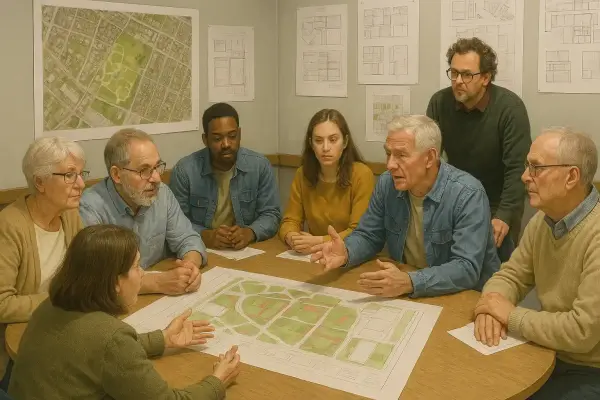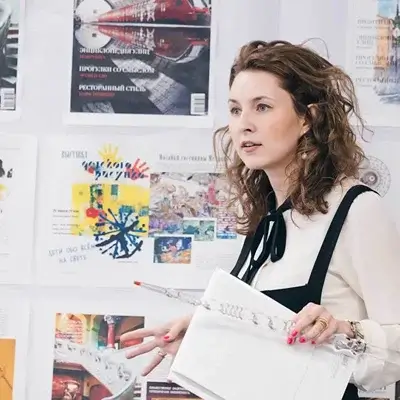Architecture plays an important role in our daily lives, shaping the appearance of cities and settlements where we live and work. However, architectural decisions are often made without considering the opinions of the residents themselves. Public involvement in urban planning processes and community architectural initiatives makes it possible to create a more comfortable living environment that meets people's needs.
"Architecture created with people's opinions in mind becomes not just buildings and streets, but a true home for the community. When residents participate in participatory design, they invest their values, needs, and vision of the future into the urban environment."
Little-known fact: the presence of litter in public places significantly reduces citizens' trust in local authorities and police, and also decreases the sense of community among residents. Removing litter and improving the design of public spaces through public architectural initiatives can increase civic engagement and trust in government, confirming the importance of involving residents in urban planning.
What is public participation in architecture
Public participation in architecture is the involvement of broad segments of the population in urban planning processes, urban environment renovation, and construction of significant public facilities. Participatory design includes discussions, surveys, public hearings on architectural projects, participation in developing concepts and design solutions. Research shows that such projects significantly contribute to social cohesion and improve residents' quality of life. Modern principles of placemaking demonstrate that this approach creates not just buildings, but places with character and identity where people truly want to be. The main goal is to make the urban environment more comfortable and functional through civic participation in architecture, implementing genuine civic initiatives in urbanism.
Why involving residents in urban planning is necessary
Have you ever wondered why civic initiatives in urbanism are so important and why professionals increasingly recognize the need to involve the public in architectural projects? Here are the key reasons that make participatory design a necessary approach:
- Promotes consideration of actual population needs through qualified public expertise.
- Creates functional spaces adapted to the daily life of a specific community.
- Significantly increases trust levels in authorities, architects, and developers, creating a foundation for long-term cooperation.
- Effectively reduces the number of conflicts and protests through preliminary project discussions.
- Gives projects authenticity through integration of local context and cultural features.
- Develops residents' deep sense of belonging and pride in their location.
According to research data, projects with public participation demonstrate 35% higher levels of long-term sustainability and 40% more intensive use of created spaces compared to projects developed without public involvement.
Methods of public involvement in architecture
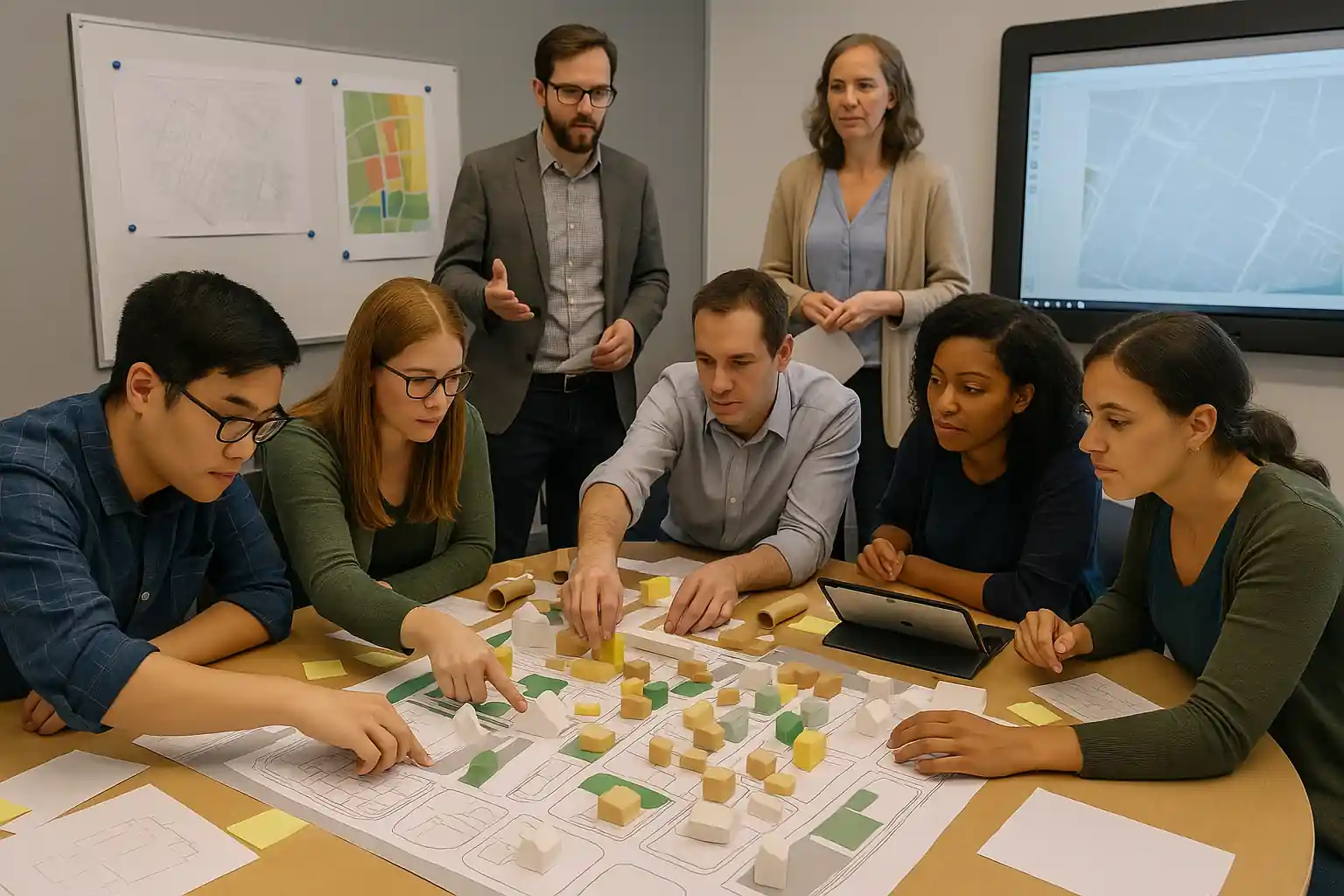 To effectively implement the idea of democratizing architecture, it's important to choose appropriate methods of citizen engagement:
To effectively implement the idea of democratizing architecture, it's important to choose appropriate methods of citizen engagement:
- Structured public hearings with professional moderation and result documentation.
- Digital platforms for opinion collection with data analytics (in Barcelona such tools attracted over 40,000 participants).
- Design workshops with residents where conceptual solutions are formed.
- Temporary pilot interventions for testing ideas before full-scale implementation.
- Mixed commissions of experts and community representatives for balanced decision-making.
- Interactive exhibitions with feedback tools and project visualization.
- Digital crowdsourcing tools for ideas and solutions to local problems.
Considering the features of the 21st century, modern artificial intelligence opens new horizons for analyzing public opinion and automating processes of collecting proposals from residents, allowing architects to more accurately consider community needs at the design stage. Using these tools helps bridge the gap between architects' professional vision and residents' needs, transforming urban territories into genuine public spaces.
"A modern architect is not just a building designer, but a moderator of dialogue between community, authorities, and business. Their task is to find a balance between professional vision and public demand to create a space that will work for everyone."
Comparison of traditional and participatory approaches in architecture
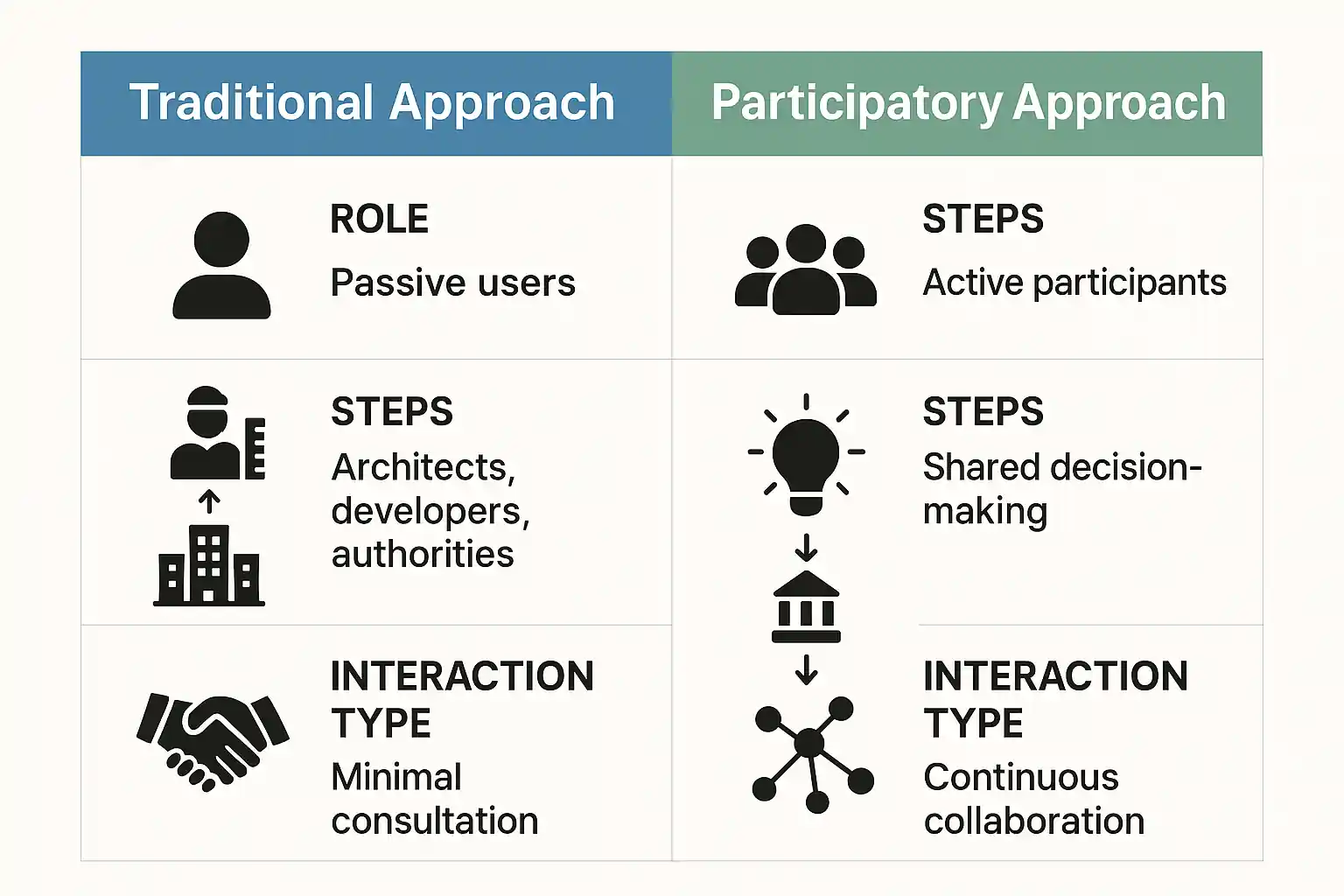 The table below presents key differences between traditional and participatory approaches to architectural design, helping to better understand the advantages of involving residents.
The table below presents key differences between traditional and participatory approaches to architectural design, helping to better understand the advantages of involving residents.
| Parameter | Traditional approach | Participatory design |
|---|---|---|
| Role of residents | Passive users | Active process participants |
| Who makes decisions | Architects, developers, authorities | Collaborative decision-making |
| Local context consideration | Often generalized, typical | Deep analysis of local features |
| Economic effect | Often unpredictable | Higher social return on investment |
| Result sustainability | May require frequent adjustments | More durable and appropriate solutions |
| Place identity | May be typical | Unique, reflecting local culture |
Thus, participatory design offers a more holistic approach to creating urban environment, which considers not only technical and aesthetic aspects, but also social context.
Examples of successful public engagement practices
Let's examine impressive examples where collaborative urban planning and community involvement in design brought tangible results:
- The High Line revitalization project in New York attracted over 3,700 local residents during the planning stage, leading to the creation of a public space that attracts about 8 million visitors annually. The socio-economic impact is estimated at $2.2 billion in new economic investments.
- Waterfront development in Lyon (France), where after implementing placemaking principles, attendance increased by 64% in the first year, and nearby real estate values increased by 25%.
- In Mexico City, the "Public Spaces" program (Espacios Públicos) has transformed over 400 abandoned urban sites into public spaces since 2007 with active participation of 75,000+ residents, leading to a 30% reduction in crime rates in these areas.
- The participatory budgeting program in Tbilisi (Georgia) since 2015 has allowed residents to allocate up to 10% of the city budget to improvement projects, increasing civic engagement by 47% and trust in local authorities by 28%.
- A little-known but impressive case from Kigali (Rwanda) — the "Umuganda" project united over 80% of the urban population in monthly community work to improve urban spaces, reducing municipal expenses by 40% and significantly strengthening the sense of community.
Such initiatives are often combined with the implementation of eco-friendly biomaterials, making the urban environment not only socially but also environmentally sustainable, responding to growing community demands for responsible construction.
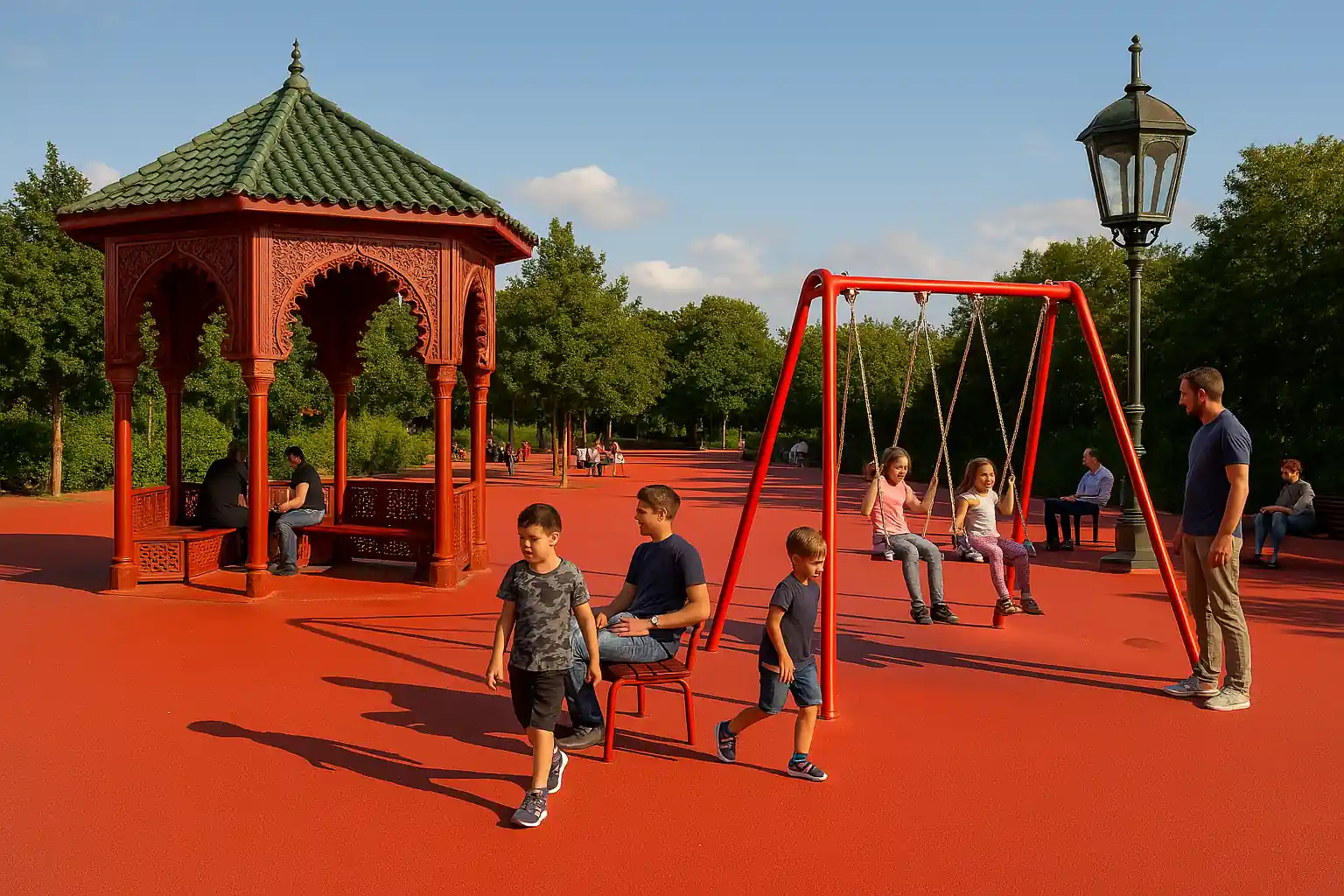 These examples prove that participatory design is not just theory, but an effective tool for creating a harmonious urban environment with active civic participation in architecture.
These examples prove that participatory design is not just theory, but an effective tool for creating a harmonious urban environment with active civic participation in architecture.
Successful example: Superkilen Park in Copenhagen, Denmark, created in 2012, is the result of active participation by local residents representing over 60 nationalities. Together with architects, they selected design elements symbolizing their cultural heritage, contributing to the creation of a space reflecting community diversity and unity. The project not only received international recognition but also became a symbol of successful participatory design, where co-creation in architecture led to the creation of a truly unique public space.
Challenges and barriers to public participation
Despite numerous advantages, there are still serious obstacles on the path to full implementation of environmental design with user participation that need to be overcome:
- People's passivity and disbelief in real influence on projects due to previous negative experience.
- Weak public awareness of participation opportunities in DIY urbanism and tactical urbanism.
- Formal approach to the architect's role in dialogue with the community without actual consideration of opinions.
- Tight approval deadlines for large projects and inflated budgets for public architectural initiatives.
- Weak development of participation culture and international civic engagement experience in Russian practice.
- Lack of real authority among public councils and representatives of civic initiatives in urbanism.
At one facility in Austria, we observed how the lack of clear communication between the developer and residents led to a six-month project delay. It should be considered that overcoming these barriers requires a systematic approach and changes to legislation on public hearings, as well as raising the general culture of participatory design among both professionals and citizens.
Conclusions
In conclusion, active civic participation in architecture and urban planning issues has transformational potential for our settlements. According to Urban Futures research center data, projects with public participation demonstrate up to 42% higher economic efficiency in the long term. Studies of specific participatory design examples confirm that such projects better integrate into urban fabric and receive more support from local communities.
In our practice working with clients, we often see how initially skeptical residents become active project supporters after the first workshop. It's like building a bridge. Only instead of river banks, we connect the architect's professional vision with people's living needs.
For maximum effectiveness, coordinated efforts from all stakeholders are necessary: administrations, professionals, and active citizens. Only through joint efforts can we create modern, convenient, and harmonious cities.
